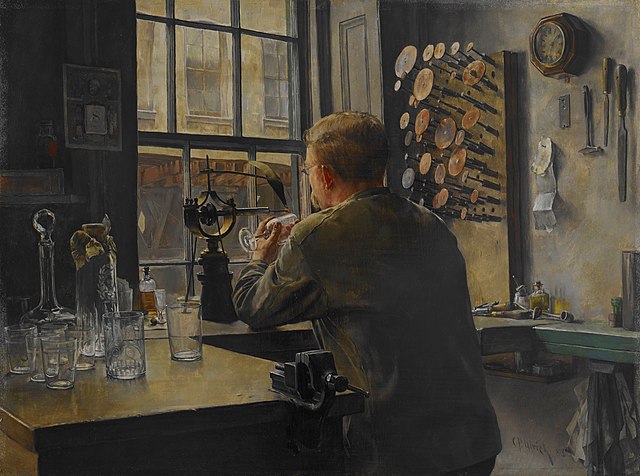Engraved glass is a type of decorated glass that involves shallowly engraving the surface of a glass object, either by holding it against a rotating wheel, or manipulating a "diamond point" in the style of an engraving burin. It is a subgroup of glass art, which refers to all artistic glass, much of it made by "hot" techniques such as moulding and blowing melting glass, and with other "cold" techniques such as glass etching which uses acidic, caustic, or abrasive substances to achieve artistic effects, and cut glass, which is cut with an abrasive wheel, but more deeply than in engraved glass, where the engraving normally only cuts deeply enough into the surface to leave a mark. Usually the engraved surface is left "frosted" so a difference is visible, while in cut glass the cut surface is polished to restore transparency. Some pieces may combine two or more techniques.
Beaker with soldier and civilian shaking hands, Bohemian glass, later 19th century.
Charles Frederick Ulrich, The Glass Engraver, 1883. The board at right holds different grinding-wheels.
Engraving with an abrasive wheel (Italy)
Dutch glass with diamond-point engraving, 1697
Glass art refers to individual works of art that are substantially or wholly made of glass. It ranges in size from monumental works and installation pieces to wall hangings and windows, to works of art made in studios and factories, including glass jewelry and tableware.
Roman glass cup from a grave in Emona (present Ljubljana)
Dale Chihuly sculpture, Kew Gardens, London
19th-century glass from Persia, The Hague Municipal Museum
Timo Sarpaneva sculpture. Sarpaneva and the Iittala glassworks explored new techniques in glass art during the 20th century.








